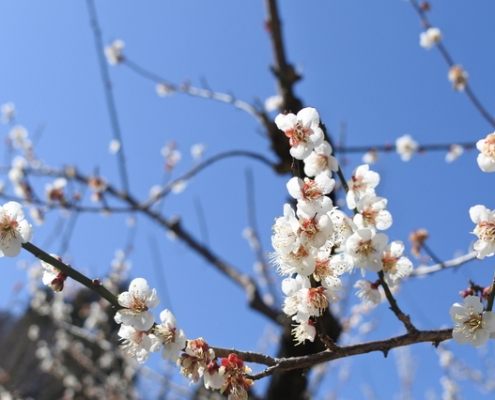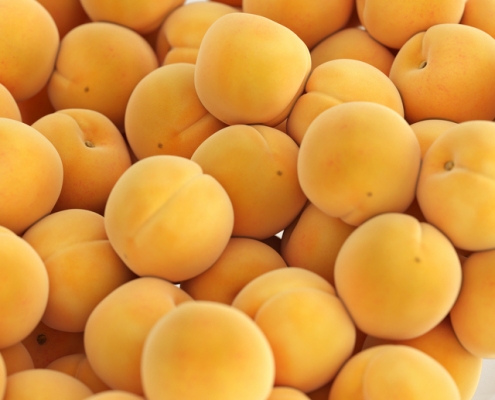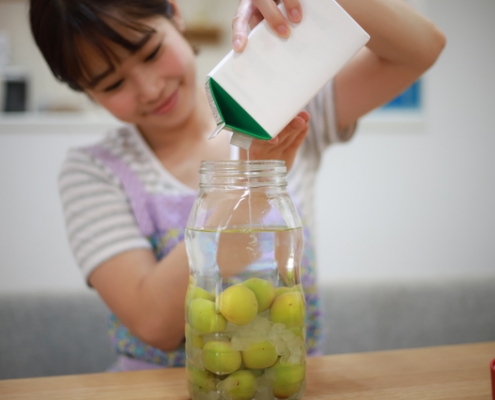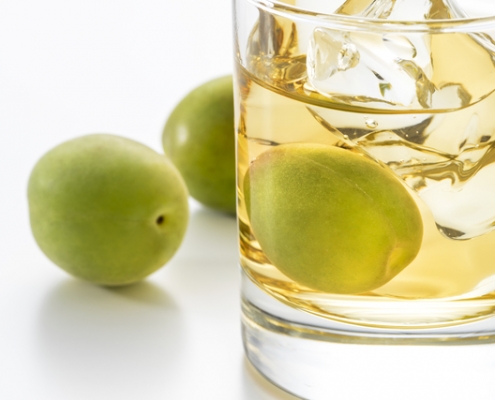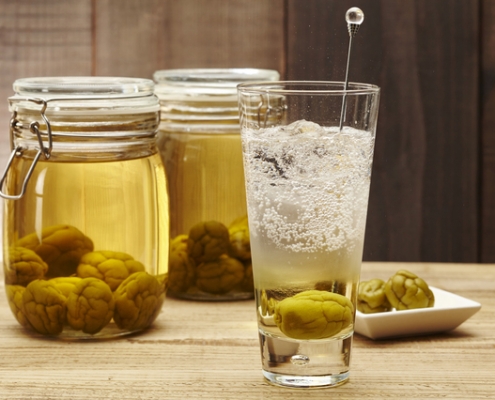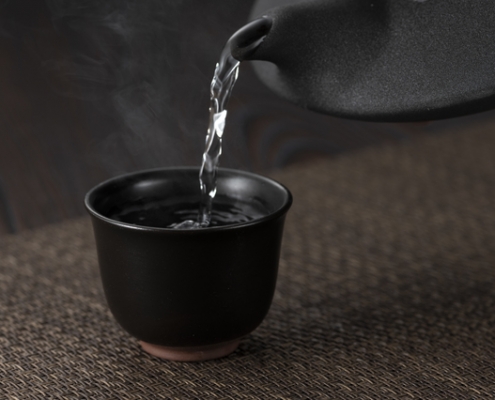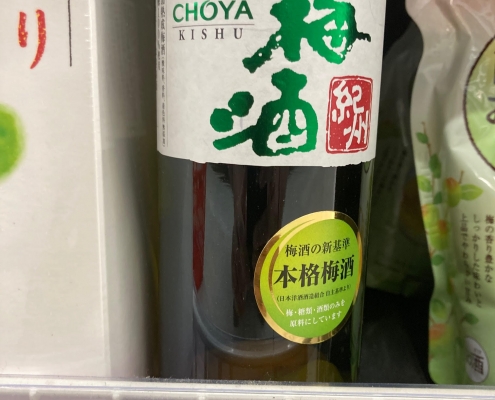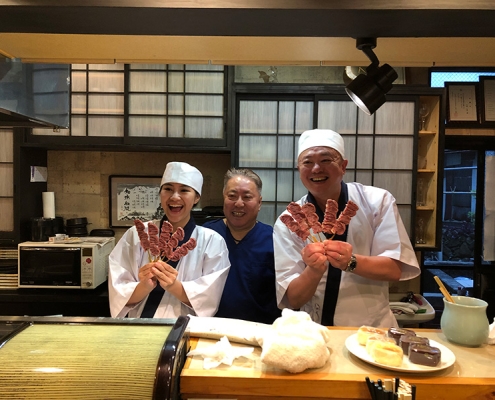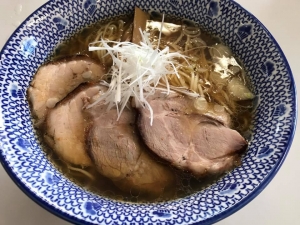Plum Wine? Apricot Wine? All You Need to Know About Umeshu
September 18 2021 Updated
Take a sip from a glass filled with amber-colored liquid. It’s refreshingly sweet and sour, with an aroma of ume fruit. Umeshu, made by steeping ume fruit in alcohol, such as shochu or brandy, is a familiar flavor for Japanese people.
In recent years it has become known as Umeshu, Plum Wine or Apricot Wine and it’s becoming popular in Asia, Europe and North America, especially among young women.
Umeshu is made by steeping whole ume fruit in alcohol and rock sugar for a certain period of time, drawing out the fruit juice and ume extract.
Since it’s easy to make at home, it’s been popular in Japan as a healthy alcoholic drink since ancient times and it’s also a favorite aperitif. Most umeshu sold in Japan is made with shochu, which has an alcohol content of 8 to 15%, but some have a brandy, whiskey or rum base.
What is Ume?
Sakura (cherry blossom) is the most iconic tree of Japan, but next would be Ume.
Ume blossoms, which herald the arrival of spring earlier than Sakura, have been cherished by Japanese people from olden times.
Ume blossoms
Not just an ornamental tree, the fruit of ume have also been popular to eat. For example, Umeboshi, salted ume fruit, is synonymous with sour Japanese food.
Rich in citric acid, it is said to be helpful in relieving fatigue and it’s an ingredient often used in Japanese cuisine.
Umeboshi
The Difference Between Ume, Plum and Apricot
Umeshu is often referred to as “Plum Wine” or “Apricot Wine”. This is a simplified explanation when ume is actually quite different from plum or apricot.
Ume
Plum
Apricot
These three fruits are in the same group, but ume is not as sweet as plums or apricots when ripe and is characterized by strong acidity.
How to Make Umeshu
Nowadays you can easily buy umeshu at convenience stores, but some households in Japan make umeshu at home, although the number is less than in the past.
Umeshu is made around June every year, when hard, unripe ume fruit comes on the market.
Today I’d like to share a simple recipe for umeshu that uses shochu.
Ingredients
Receipes
<1> Remove the black stems one by one, using a bamboo skewer.
<2> Once all the stems have been removed, put the ume fruit in to a bowl, wash and drain.
<3> After washing the storage jar for your umeshu, sterilize it with boiling water and dry well.
<4> Place the ume fruit and rock sugar in alternating layers and lastly, pour in the shochu.
<5> Store in a cold, dark place out of the sun.
Umeshu is ready in 3 months, but it’s said homemade umeshu is best enjoyed after 6 months to a year.

How to Drink Umeshu?
While everyone has different preferences, the following three are the most popular ways to drink umeshu.
On the Rocks
While everyone has different preferences, the following three are the most popular ways to drink umeshu.
Umeshu and Soda
Enjoy the sweetness of umeshu and the invigorating sensation of sparkling soda water. It has a light and refreshing taste.
The ratio of umeshu to soda water should be around 1:2.
Umeshu and Hot Water
The perfect cold-weather drink. Pour the hot water first so the umeshu and hot water mix naturally at a ratio of 1:1.
Relax with the gentle aroma of umeshu.
Who is the Most Popular Producer of Umeshu in Japan?
As of 2021, it’s said there are over 300 manufacturers of umeshu and among them, CHOYA is the largest company in the industry, with a domestic market share of over 30%.
This well-known umeshu producer has a history of over 100 years, but it’s from the 1980’s that sales really started increasing. Demand for commercially made umeshu increased with the rise in nuclear families (family groups consisting of parents and their children), who don’t have as much opportunity to make their own. To meet this demand, CHOYA increased their sales.
Now sold in more than 70 countries around the world, the name CHOYA is as well known as umeshu or plum wine.
Choya Umeshu
The aged umeshu, “The CHOYA”, which came out in 2016, has also been a massive success. There are two aging periods : Single Year (domestic retail price of around 9 USD) and Aged 3 Years (domestic retail price of around 23 USD). The Single Year has a rich mouth aroma of Nanko Ume, and the Aged 3 years is characterized by its’ brandy-like mellow acidity.
What is Honkaku Umeshu?
Generally, the ingredients for umeshu are ume fruit, sugar and alcohol – only natural ingredients. But some manufacturers are now turning to mass production to lower prices.
Some of these companies sell umeshu made with a combination of citric acid, which is an acidulant, flavoring, food coloring and ume extract.
In light of this, in January 2015, the Japan Spirits & Liquors Makers Association, one of Japan’s liquor industry groups, began to define umeshu made only from ume fruit, sugar and alcohol as “Honkaku Umeshu”.
Honkaku Umeshu is increasingly popular with health-conscious consumers. CHOYA, mentioned previously, is a certified producer of Honkaku Umeshu.
Honkaku Umeshu Single Year
Where Can You Buy Umeshu?
You should be able to buy it from Japanese food suppliers or Japanese grocery stores in Asia, Europe and North America.
To learn more about Japanese food suppliers in your country or area, be sure to check out the following link.
What would you like to know more?

Culinary Schools in Japan
Tokyo Sushi Academy
The first and the most popular sushi school in the world.
Japan Culinary Institute
Japanese culinary training including sushi, kaiseki, yakitori, wagashi and more.
Miyajima Ramen School
More than 1,000 graduates from over 50 countries.
International Ramen School
Ramen study program combined with OJT


